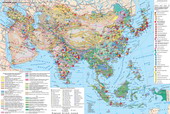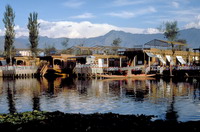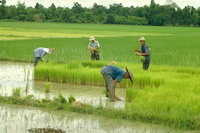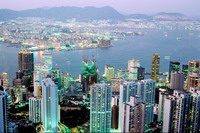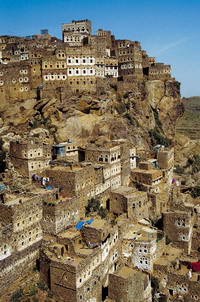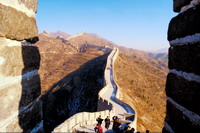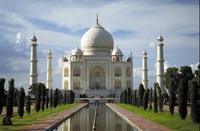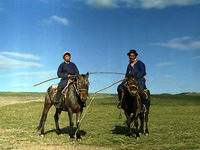Asia - the largest part of the world. It is home to more than half of humanity. On its vast expanses of ancient civilizations have high material and spiritual culture, there emerged three world religions, and now formed a specific model of social and economic development: Japanese, Chinese model of Petroleum Exporting Countries and others.
In terms of economic development of most countries in the group of developing countries as Japan and Israel are highly developed. North Korea, Vietnam and China belong to the group of countries with centrally controlled economies. The countries of Transcaucasia and Central Asia - the state transition economy.
For economy of most Asian countries are characterized by predominance of agriculture over industry, and agriculture is dominated by crop production.
Industry (excluding Japan, China, Kazakhstan, NICs) are characterized by the dominance of extractive industry on manufacturing.
In the international division of labor to Asia, with the exception of developed remain suppliers of agricultural products (tea, natural rubber, cotton, spices, tropical and subtropical fruit) and products of mining and extractive industries (oil, gas, manganese, tin, Chromite, Iron Ore, etc.).
South West Asia - most of the Middle East (from Turkey to Afghanistan and the island of Cyprus), here referred 16 independent states and the Palestinian territories. This region is called the crossroads because it is located at the junction of Europe, Asia, Africa, the crossroads of important sea lanes. This situation and the existence of large oil deposits ( 2 / 3 of world reserves) and gas ( 1 / 4 of world reserves ) provide the region's important economic and strategic importance.
economy of the region is mainly agrarian and raw nature. In the main oil-producing countries of the condition and character of the economy depends on mining and oil and gas sales (Iraq, Iran, Bahrain, Kuwait, Qatar, Oman, UAE, Saudi Arabia). In some states a significant oil refining industry were developed, some of the machine building and metalworking (Israel, Iraq, Jordan, Kuwait, Turkey). The problems of South-West Asia are water shortages and political instability.
West Asia (Transcaucasia) - located in the southern Caucasus isthmus (Armenia, Azerbaijan, Georgia). According to its geographical position, these countries belong to Asia, but the history of development and cultural traditions (Georgia and Armenia - Christian country), some scientists consider them to European countries. These states have close ties with both the Central and Eastern Europe, and with the countries of Southwest Asia. Caucasus is rich in fuel and energy resources (Azerbaijan), iron ore (Azerbaijan, Armenia), manganese ore (Georgia), copper ore (Armenia and Georgia). This region is known as a resort and one that specializes in growing vegetables, fruit, citrus, grapes and tea.
Central Asia . This region includes Mongolia, Kazakhstan and Central Asia - Turkmenistan, Uzbekistan, Kyrgyzstan, Tajikistan. These countries are in the closed region of Eurasia in the area of deserts and semi-deserts. One of the main problems of the region is a significant shortage of water. Countries in the region is well provided with some kinds of minerals: coal (Kazakhstan), oil and natural gas (Kazakhstan, Turkmenistan, Uzbekistan), ores of nonferrous metals (Kazakhstan, Uzbekistan) and chemical raw materials. Mining industry is leading in most countries. In the commercial sector of Kazakhstan are allocated metallurgy, chemical industry, machinery, light industry and food processing. Agriculture in the region specializing in growing grain and cotton, dairy and beef cattle, breeding (Mongolia).
to Southeast Asia include Indochina Peninsula, Malay Archipelago and the Philippine Islands. In this region - 11 countries: Myanmar, Vietnam, Laos, South Korea, Thailand, Cambodia, Malaysia, Brunei, Indonesia, Singapore. In Southeast Asia go the ways of Europe and the Middle East to Asia and Australia. Countries in the region is well provided with natural resources have a strong export base and become the largest and sometimes monopolistic exporting certain goods (consumer electronics, telecommunication equipment, integrated circuits, etc.).
Southeast Asia continues to act as an important supplier of MPPU agricultural commodities (rice, natural rubber, spices, coconuts, palm oil, etc.). Countries in the region (especially Indonesia, Malaysia, Singapore, Philippines) - among the world leaders in osbsyahamy investments.
South and East Asia on separate cards. A separate group in Asia are the New Industrial Countries (NICs) of South-East and East Asia. These include four Asian tigers , which rose in the first wave of industrialization in 1980 Twentieth century. (South Korea, Singapore, Hong Kong, Taiwan), and the country's second wave of industrialization in 1990 Twentieth century. (Malaysia, Thailand, Brunei, Indonesia, Philippines). In the middle of the twentieth century. role of these countries in the world economy was a sideline, but then they began to actively and consistently pursue a policy of industrialization, the Japanese model and financial support from Japan and USA. In NIK was established open economy with free economic zones and export-oriented production. Over the past decade has greatly increased the share of industry in GDP of countries continues to increase the share of services sector, which proves convergence of these countries to the developed category. Thus, the reason eqonomichnoho rise NIK Southeast and East Asia are restructuring the economy from the wide introduction of achievements of scientific and technical progress.
 English
English
